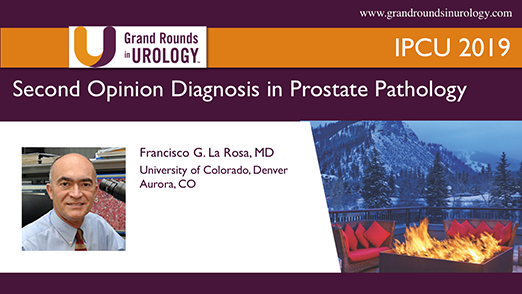Pathological Aspects of BPH, Prostatitis, and Other Painful Co-Occurrences
Francisco G. LaRosa, MD, FCAP, explores the pathology of benign prostatic hyperplasia (BPH), prostatitis, and associated urological conditions. He begins by reviewing the pathophysiology of BPH, presenting examples of usual and specific patterns of BPH and their progression.
Transitioning to prostatitis, Dr. LaRosa examines acute and chronic prostatitis. He highlights the mechanisms behind its close association with BPH, despite its frequent misdiagnosis and mismanagement in BPH patients.
Dr. LaRosa concludes by providing examples of other non-cancerous co-occurrences which can be discovered after prostate biopsy. He focuses on fibromas, thromboembolisms, and calcification.
Read More


